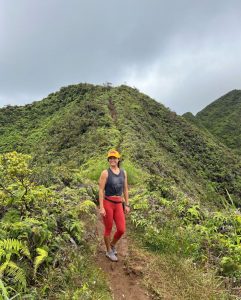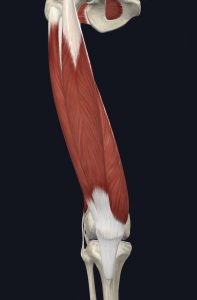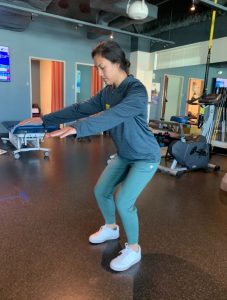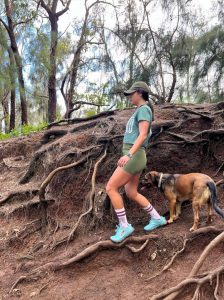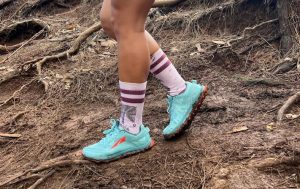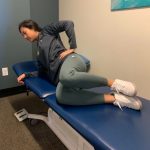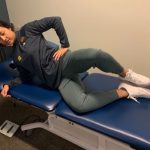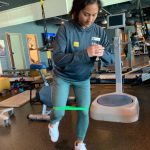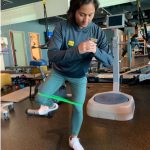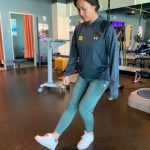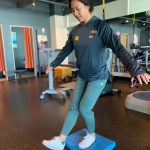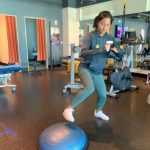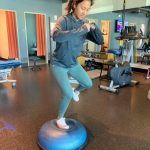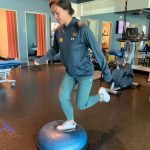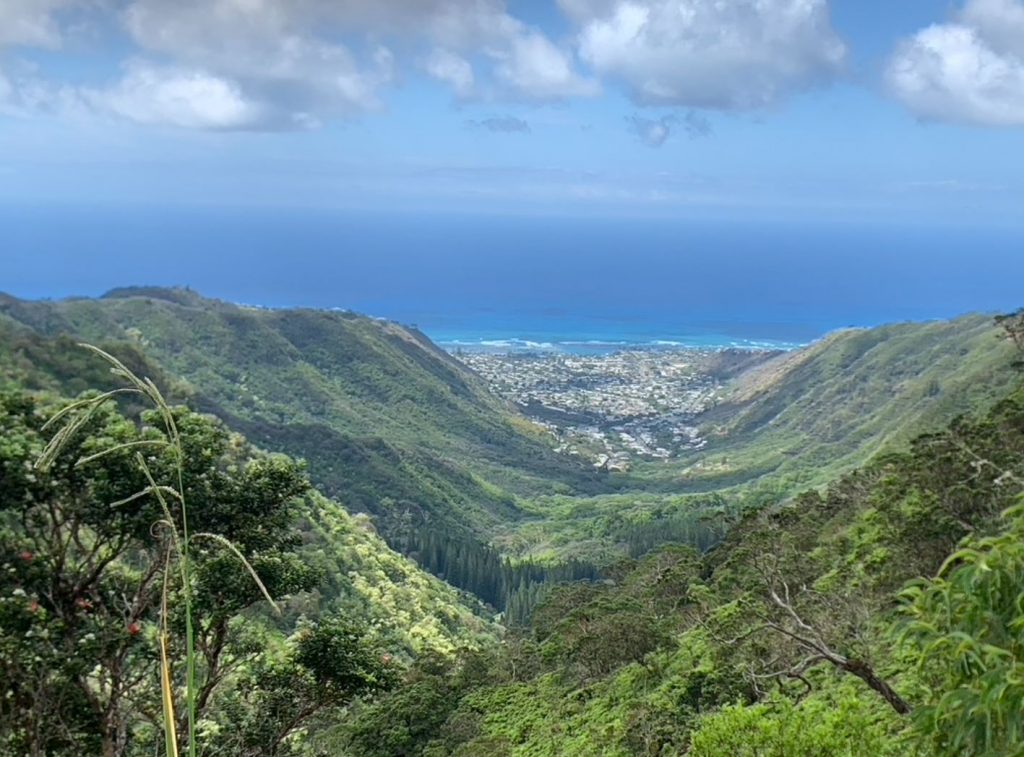
Who doesn’t love hiking the outdoors and soaking up the beauty around us?
Outdoor walks are always enjoyable and relaxing, especially if you can be fully immersed in nature. Living in Hawaii (or anywhere with natural beauty) gives the never-ending opportunity to explore nature through hiking!
But don’t let aches and pains ruin the chance to enjoy the great outdoors. Knee pain is common among hikers, especially while hiking downhill and traversing over rocks and roots. If you’re experiencing knee pain, there are ways to fix and prevent future episodes.
Let’s understand what factors contribute to your knee pain so that we can tackle the problem before you miss out on your next adventure.
If you have questions about your knee pain, or if it doesn’t seem to resolve, reach out to JACO Rehab and book an evaluation with a physical therapist.
What’s Happening Around Our Joints While Walking Downhill?
We often hear patients point to the front of their knee and say, “I really only feel the knee pain when I am walking downhill, but not uphill.”
Sound familiar? Here’s what happens.
The difference between going uphill and downhill is the primary muscle movers, or the main muscles doing the movement. These muscles include the quadriceps, hamstrings, and glutes. Let’s use the quadriceps (quad), or the big muscle group on the top of your thigh, as an example.
- The quadriceps muscle group | Image courtesy of Complete Anatomy
While walking uphill, the quads contract (activates) concentrically to control our knee movement. This means the muscles are activating while the muscle is shortening.
While walking downhill, the quads contract eccentrically, which means the muscles are activating while the muscle is lengthening. Think about slowly releasing that flexed muscle but keeping it engaged while it lengthens.
When you walk uphill, your quad contracts concentrically because the muscle shortens each time you step. When you walk downhill, your quad contracts eccentrically because the muscle lengthens each time you step, but it requires a lot of control. If your quad doesn’t control the muscle’s lengthening, you won’t break… your knee will keep bending and you’ll roll down the hill!
Walking downhill applies more force through the knee joint, which requires adequate strength and control as the quad contracts eccentrically. If your quad is trying to control your movement but it’s too weak to tolerate the repetitive force with every step, you’ll develop that dreaded sharp pain in the front of the knee. But why there?
When the force in this eccentric phase becomes excessive and the muscle’s tendon (the part that attaches to bone) is not quite ready to tolerate that amount of force, it can become irritated and inflamed.
This is an injury known as patellar tendonitis, which is one of the most common reasons for pain while hiking downhill.
A Deeper Understanding of Concentric vs Eccentric Contraction
The concept of concentric and eccentric contractions can be a little confusing initially, so let’s dive a little deeper with an example: the squat. Let’s stand up and try it together.
Start in the standing position.
Lower slowly into a squat position. Notice how much control is needed to slow down your knee bend against gravity? Do you feel the quad, or the top of your thigh, working as it lengthens over your kneecap? That’s an eccentric contraction.
Now hold there. Feel your quad working hard to stay in one position – not shortening or lengthening, but holding. That’s an isometric contraction, but we won’t talk about this one for now.
Slowly return to the standing position and feel how your quad is shortening to straighten your leg. That’s a concentric contraction.
Other Causes of Knee Pain From Walking Downhill
Our bodies work as a unit to adjust to our environments. If your body isn’t working well as a unit, inefficiencies in one body region can influence neighboring muscles and joints.
Sometimes, we need to look above and below the injured area to make sure those neighboring muscles and joints aren’t leaving you vulnerable. If you’ve had knee pain for a while, a physical therapist can help inspect other areas that could be hindering your progress. Who knows—what appears to be a “knee issue” could be something else!
Let’s also take a look at how the back, ankle, and foot might influence what we feel in the knee.
How the Back Influences the Knee
When walking downhill, our trunk leans back slightly to adjust our center of gravity and maintain balance so that we don’t fall forward.
Leaning back naturally decreases the space between your spine’s bones (vertebrae) and nerve passageways as they leave the back and travel down the leg. A narrow nerve passageways could be bothersome for people with certain types of back pain. In fact, some people may develop radiating nerve pain that travels to the knee, mimicking knee pain.
This concept is a classic example of regional interdependence, which is when one area’s “problem” influences another. In this case, nerve pain from the back is masking itself as knee pain. Keep an open mind about pain origins—your physical therapist may screen other body parts to understand your pain patterns for this reason.
How the Foot and Ankle Influence the Knee
Let’s take a closer look at how the foot and ankle can influence the knee while walking downhill.
Remember that hiking is not just walking downhill on a flat surface, but it is usually on uneven terrain. Our feet and ankles are responsible for responding to the uneven ground we walk on. For example, if your ankle cannot remain stable while adapting to a trail full of tree roots, you may:
- Roll your ankle
- Start to feel pain on the bottom of your foot
- Place that demand on the next joint (your knee)
Maybe your knee isn’t the cause of your pain. Your pain could be due to sleepy ankle muscles that force other muscles and structures around the knee to work overtime.
Can I Hike With Knee Pain?
Patients often ask, “Do I have to stop all activities because of my pain?”
Selfishly, the physical therapist may want to say, “Yes, take a break from all fun activities to allow for possibly quicker recovery time.” But in reality, this isn’t beneficial at all. Engaging in things you love can help you stay positive, and your mindset contributes to your recovery.
The answer is in the gray area. You should stop hiking if the resulting knee pain prevents you from doing your daily activities comfortably.
However, if you have only a mild amount of pain during and after the hike, then you can probably keep hiking while doing your physical therapy exercises.
If you keep hiking, consider pacing yourself. You may have to do a hike with less hills if your therapist recommends it, but you don’t always have to stop in your tracks. Or, if you’re an avid hiker who treks eight to 15 miles twice per week, then it might be best to cut back on the mileage and frequency to one bout of eight miles.
Talk to your physical therapist and come up with a plan to modify (but not stop) your activity so you can build it back up again.
How Do I Strengthen to Prevent Knee Pain?
One of the most important ways to prevent knee pain during downhill hiking is by strengthening some primary muscle groups, like the gluteus and quads.
The gluteus muscles help to stabilize the knee and prevent the joint from experiencing excessive force. For example, the glute medius and maximus can prevent the knee from falling inward every time you take a step while going downhill on uneven terrain.
The quads, which we discussed in depth earlier on, are one of the main movers for climbing and descending hills. If you remember, strengthening the quad eccentrically can help train it to tolerate those downhill forces as you break with each step.
And don’t forget about those foot and ankle muscles that help you balance on unpredictable terrain. Together, the muscles of the hip, knee, foot, and ankle will help you adapt to your surroundings and tolerate those downhill treks.
Check out the exercises below for ideas to get started. Contact your physical therapist if you’d like an exercise program tailored specifically for you.
1. Clams (2 sets of 15 repetitions on each side)
- Lay on your side with your knees stacked
- Keeping your feet together, lift the top knee
- Maintain core engagement and don’t roll backward
Bonus: Add a resistance band around the knees to make it harder.
2. Standing Hydrants (2 sets of 15 repetitions on each side)
- Slight forward hinge at the hip
- Bend one leg to 90 degrees at the knee and rotate up and out
- The standing leg has a slight bend in the knee
- Maintain knee alignment—don’t let it fall inward as the band gains tension
Bonus: Add a resistance band around the knees to make it harder.
3. Single leg squat on solid and uneven surfaces (2 sets of 8-10 repetitions)
- Balance on one leg (Option to lightly hold on to a stable surface for some balance)
- Lower into a squat, around 45-60 degree knee bend
- Maintain knee alignment—avoid knee falling inward
4. Lateral hops and forward hops on a foam pad (2 sets of 15 repetitions on each side)
- Have a foam pad or BOSU ball (or something soft) nearby
- Hop forward or to the side onto the soft surface
- Land with knee and hip aligned—avoid allowing the knee to fall inward
Bonus: You can also practice this outside in a grassy area if you do not have access to a foam pad.
What Else Might Prevent Knee Pain Going Downhill?
Consider other ways to manage and prevent your knee pain when hiking downhill, like taking smaller steps, slowing your pace, and using equipment.
Take Small Steps
It’s easy to over stride when walking back down the mountain, which means your quads have to break harder. This can exacerbate existing knee pain from patellar tendonitis.
Next time you go down the mountain do your knees a favor and shorten those steps just a bit!
Slow Your Pace
You can also slow the pace to reduce the pain. It may be tempting to pick up the pace going downhill and just let momentum take you, but you must try to be in control.
Slowing your pace can enforce the proper muscles to stabilize the knee joint going downhill. Our quads need to work harder going downhill, so by slowing the pace, we can have a bit more control.
Use Equipment
It’s okay to use equipment to give us the support we need while enjoying the activities we love.
There is often this preconception that using assistive equipment can indicate “weakness.” But using equipment to further prevent injury or reduce pain is actually a great idea!
The use of walking sticks or even a compression knee brace can distribute stress elsewhere. Walking sticks are great tools because they act as support devices, offloading the knee joint and surrounding muscles with each step. They can also act as a safety measure, improving your footing to avoid falls. A knee compression brace helps you feel more stability in the knee, especially when you already have existing knee pain. But braces and sleeves aren’t always appropriate, so let’s see when you should use one.
More About Knee Braces: When Should I Wear Them?
Wearing a knee brace while hiking may be seen as a “crutch” to some, but it can also be seen as a great way to provide temporary relief from knee pain. The knee brace can improve stability around the knee and offload the pressure on the joint.
But a brace can give a false sense of permanent pain relief and sometimes worsen your existing injury. Long-term use of a knee brace trains you to depend on the brace for stability rather than your muscles, and you’ll lose some of the muscle strength and coordination you need to recover. Remember that a knee brace is only a temporary tool for relief, not a permanent fix.
It may be a good decision to use a knee brace during longer-distance hikes and very rugged terrain. No matter how physically fit we may be, there is always a risk of possible injury or pain onset with fatigue and repetitive stress, so a knee brace could be helpful to prevent repetitive use injury.
Reach Out!
If you absolutely love hiking, but your knee pain is becoming a barrier (especially if it’s becoming sharp or worse), look for treatment options. Consider talking to your doctor and booking an appointment at any JACO Rehab location!
Or, if you’re looking to prevent pain during your treks, book a spot with the Injury Prevention Clinic on Saturdays at the JACO Rehab Kapolei location.
Don’t wait another day and take action. Get one step closer to your goals and book an appointment today.
Written by Mara Mukai, DPT
